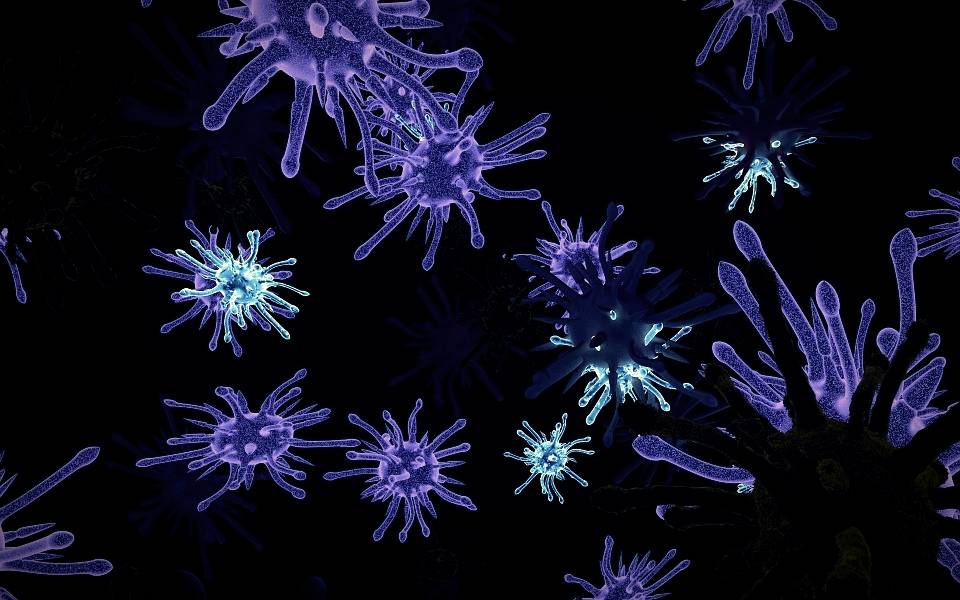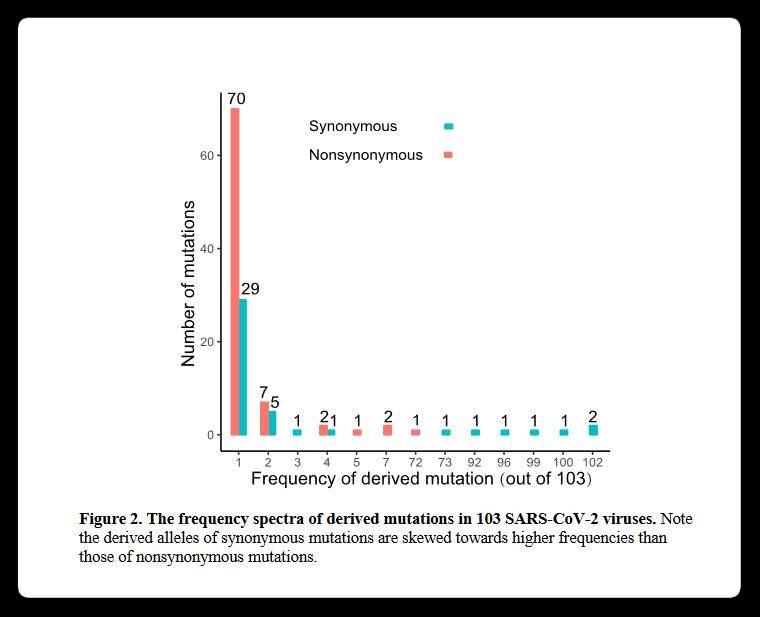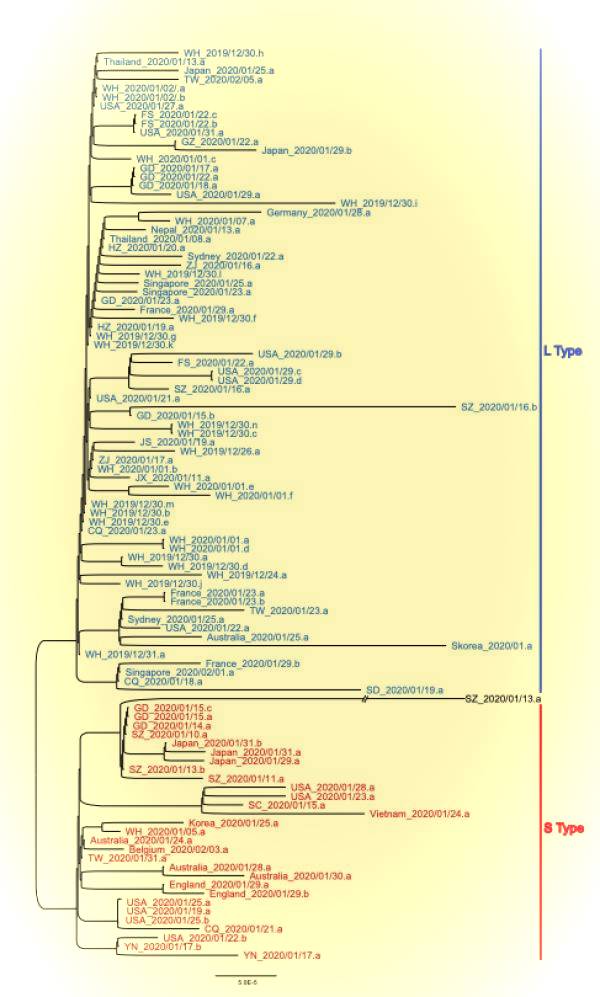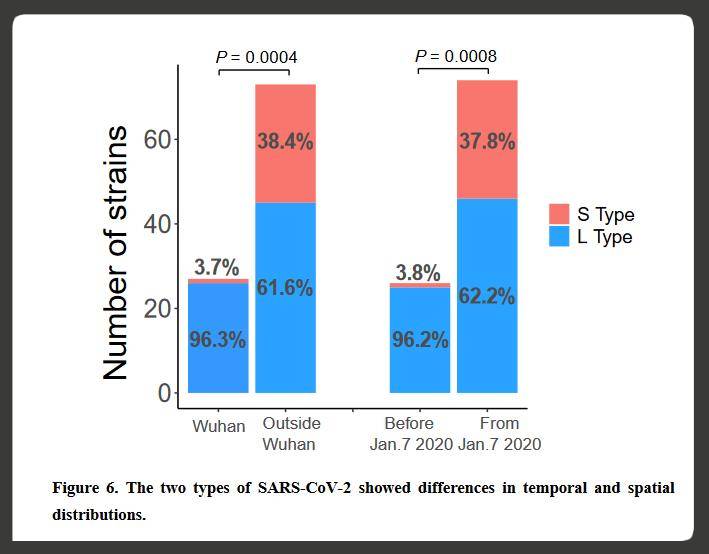New coronavirus mutants misread S subtype is actually the “ancestor” of L subtype?

The most troubling thing is coming for scientific researchers. An undeniable fact is that the new coronavirus is still changing in ways we do not know. Compared to the new coronavirus that defeats the SARS virus.
on March 3, Lei Feng News, the National Science Review published an article with the title “On the origin and continuing evolution of SARS-CoV- 2)”. The National Science Review – sponsored by the Chinese Academy of Sciences

In the thesis, a large analysis of the genome-wide molecular evolution of 103 new coronaviruses revealed that there were 149 mutations in virus strain. Of which 101 could be classifieds into two subtypes, L and S. The S type is a relatively older version. While the L subtype is more aggressive and more infectious. By proportion, the L subtype is more common. The L type reaching 70% and the S subtype is 30%.
The new coronavirus maybe divided into two types, not recent mutations
According to the Interface News report, It is noteworthy that the industry media bio-art team analyzed the research of the relevant scientific research team. And said that some media said that ” New coronavirus has been mutated! was misunderstood”. The correct understanding should be this: New coronavirus can be divided into two types, L and S, according to different mutational locations in the genome, but these two types may be present at the early stage of the virus’s spread. And they had not changed recently.
The L subtype is relatively older and closer to the phylogenetic tree from bats to coronaviruses. The s S subtype is more aggressive and contagious but accounts for 30% of the total.
According to reports, the difference between the two subtypes is on the 28144th site of the viral RNA genome. According to leucine Leu, The L is the base of type T. According to Serine Ser S is type C base. 
The subtype S is the “ancestor” of the subtype L, has it not been restored?
The L subtype is relatively older and closer to the phylogenetic tree from bats to coronaviruses. The s S subtype is more aggressive and contagious but accounts for 30% of the total. The L subtype is T base, which is equivalent to leucine Leu. And S subtype is C base, which is equivalent to Siren serine Ser
The Public account: Leifeng.com found that the study selected 103 viral genome sequences in total. And also found that 149 mutations in virus strain were-detected with 43 synchronous mutations and 83 errors. Including
- Sense mutation (nonsynonymous mutation)
- 70% of the virus sequences have 7 identical sense mutations, plus 1 identical missense mutation (L84S). Thus affecting the function of the virus’s 6 proteins.

Spectrum analysis of 103 derivative variations of the new Coronavirus strain. Orange is a non-synonymous variable. Green is a synonymous mutation
In this study, 70% of these viruses were-classified with these mutations as the L subtype of SARS Cov2 (L misunderstanding mutant iss derived from L84S). The S84L called the S subtype.
The author of this article believes that according to the evolution of the new coronavirus, There can be a big difference between the transmission capacity and the severity of the L and S subtype.
To further study the relationship between L-type and S-type strains. The researchers reconstructed their phylogenetic tree. This tree based on the entire genome sequence of 103 SARS-Co-2 viruses.

The following further confirmed the differences between L-type and S-type strains
The L subtype is relatively older and closer to the phylogenetic tree from bats to coronaviruses. The s S subtype is more aggressive and contagious but accounts for 30% of the total.
According to the SARS-COV family, the first other virus is S84L. Therefore, research shows that the L subtype that is currently popular derived from the S subtype. And the S subtype is actually the “ancestor” of the L subtype.
It is noteworthy that the research analysis concludes that both subtypes are not reorganizing cycles in nature. SNP analysis further confirmed the classification of this lineage. The 72 virus sequence was T28144, which encodes L. The 29 virus sequences were C28144, which code S. According to leucine Leu, The L is the base of type T. According to Serine Ser S is type C base.
Comparing with other coronaviruses the authors found that the S subtype is closer to the coronavirus originating from the bat on the new coronavirus phylogenetic tree. And the authors concluded that the S subtype is relatively older.
The L subtype was more common in the early stages of the Wuhan outbreak. And the frequency of the L subtype decreased in early January 2020. The authors believe that human intervention can exert more selective pressure on the L subtype. The L subtype may spread more aggressively and rapidly. On the other hand, since selection pressure is relatively weak. Primitive and less aggressive S types can increase in relative frequency.
One very natural reason is that the relatively old S-type new coronavirus should create more stress as it takes longer to spread to people. However, genomic data show that L-type 70% and S-type accounts for 30% and that each strain of L-type causes relatively newborn changes from S-type.
Why does the new coronavirus cause more stress than the young L-type?
The authors speculate that L-type viruses are more capable of spreading or replicating faster in the body. Which may mean they are more virulent.

The authors further compared changes in the proportion of S type and L type before and after January 7. They found that the proportion of L-type decreased in virus strain while that type increased. Regarding this slight change, the author also made his own speculation. Because China has taken stringent anti-pandemic measures. The patients with type L virus are more likely to show symptoms and thus need manual intervention. Is more likely to become a target, thus becoming L. The new type of coronavirus is under more negative selection pressure and the number of infected people decreases.
In addition, these 103 samples showed that most patients were-infected with only one of the L or S subtypes. However, the virus isolated from one of the US patients with recent travel history in Wuhan suggests that they may be infected with both the L and S variants of the new coronavirus. However, the authors say the possibility of new mutations cannot be ruled out at this time.
Overall, this study routinely elucidated the evolutionary dynamics of the virus during human transmission through genome analysis of 103 SARS-CoV-2. At the same time, the authors also stated that these results mean that in 2019, it is imperative to conduct more comprehensive studies by combining genomic data, epidemiological data and chart records of the clinical symptoms of coronavirus patients in 2019. Required.
Also, Read
Chinese Scientific Research: New coronavirus has been mutated!
New coronavirus epidemic spreads globally
WHO raises global risk assessment for new coronavirus outbreak






